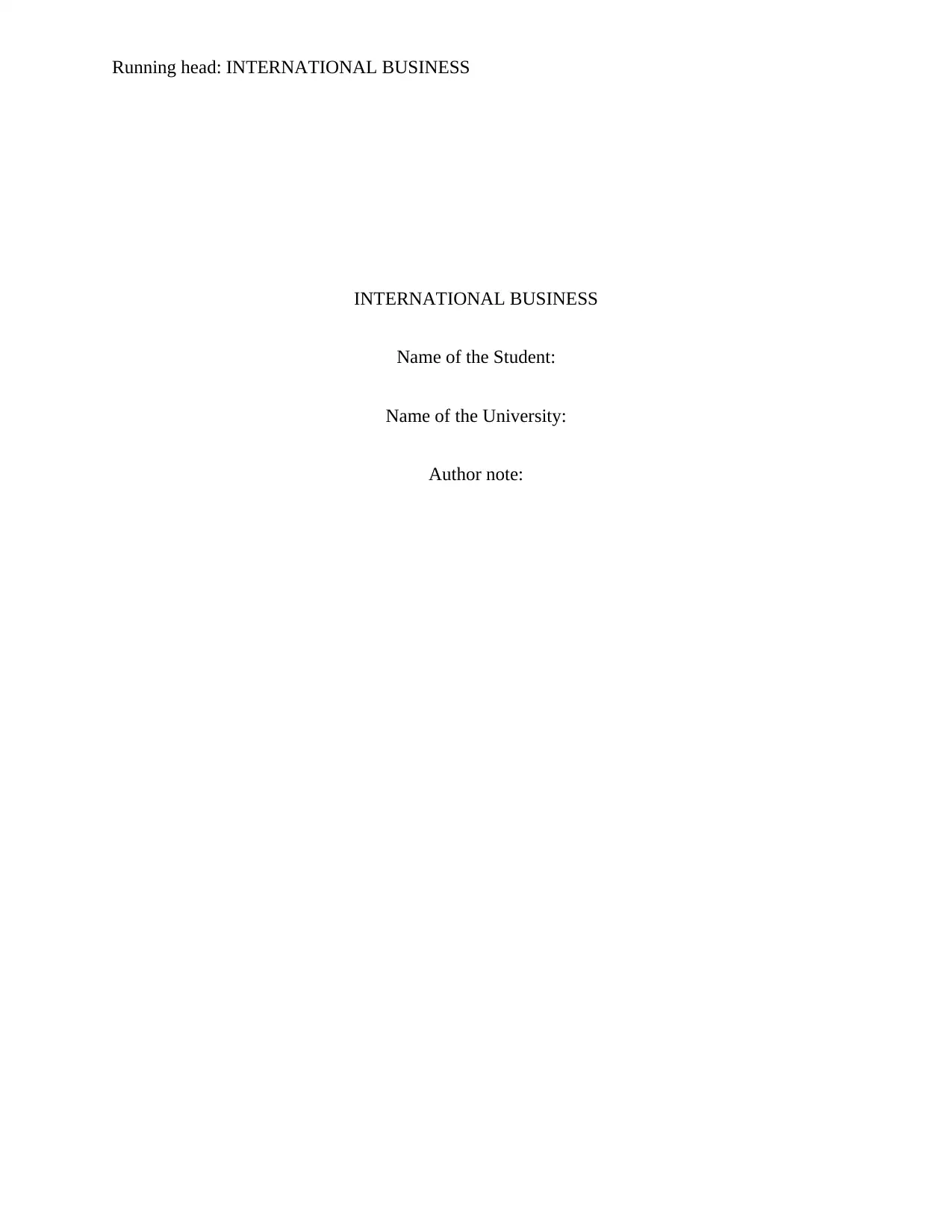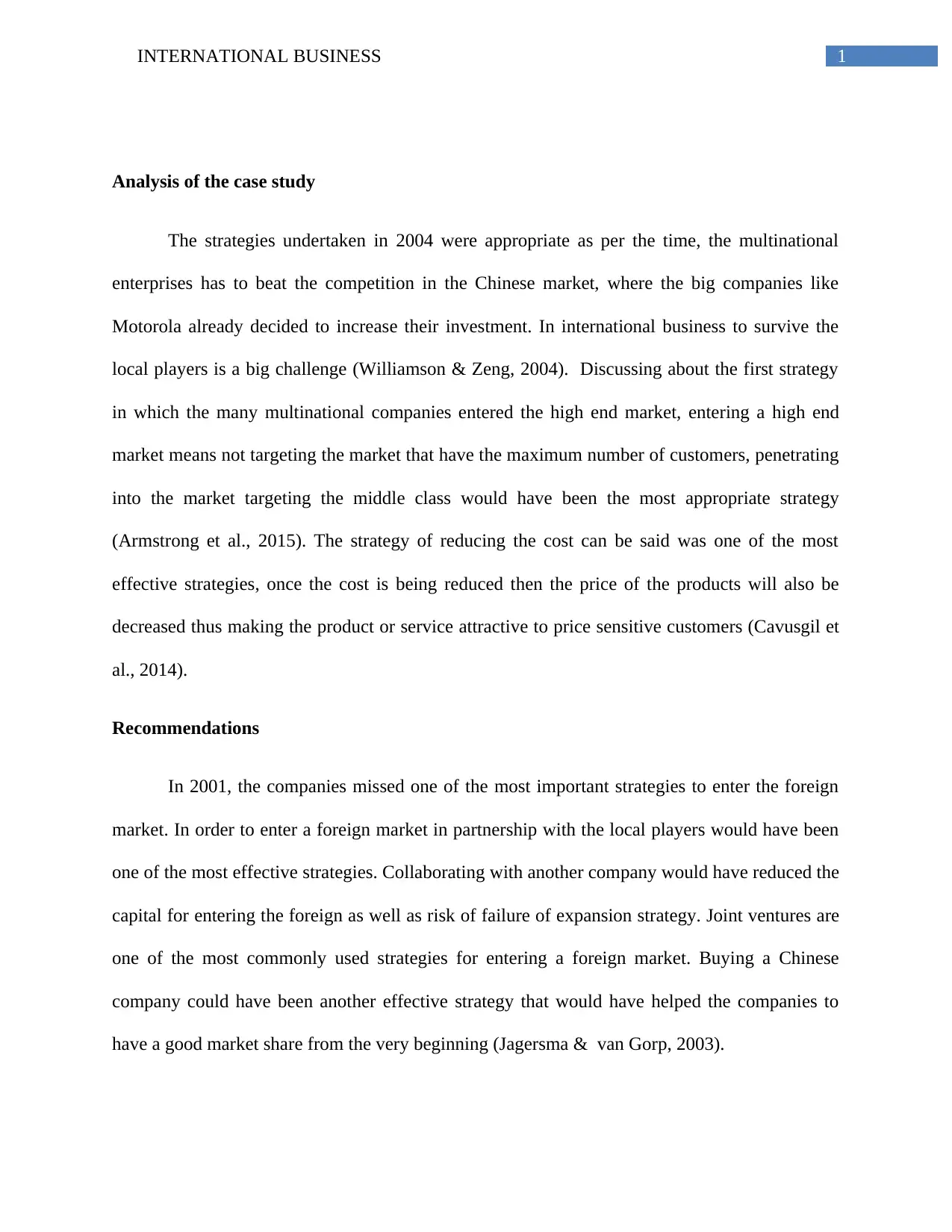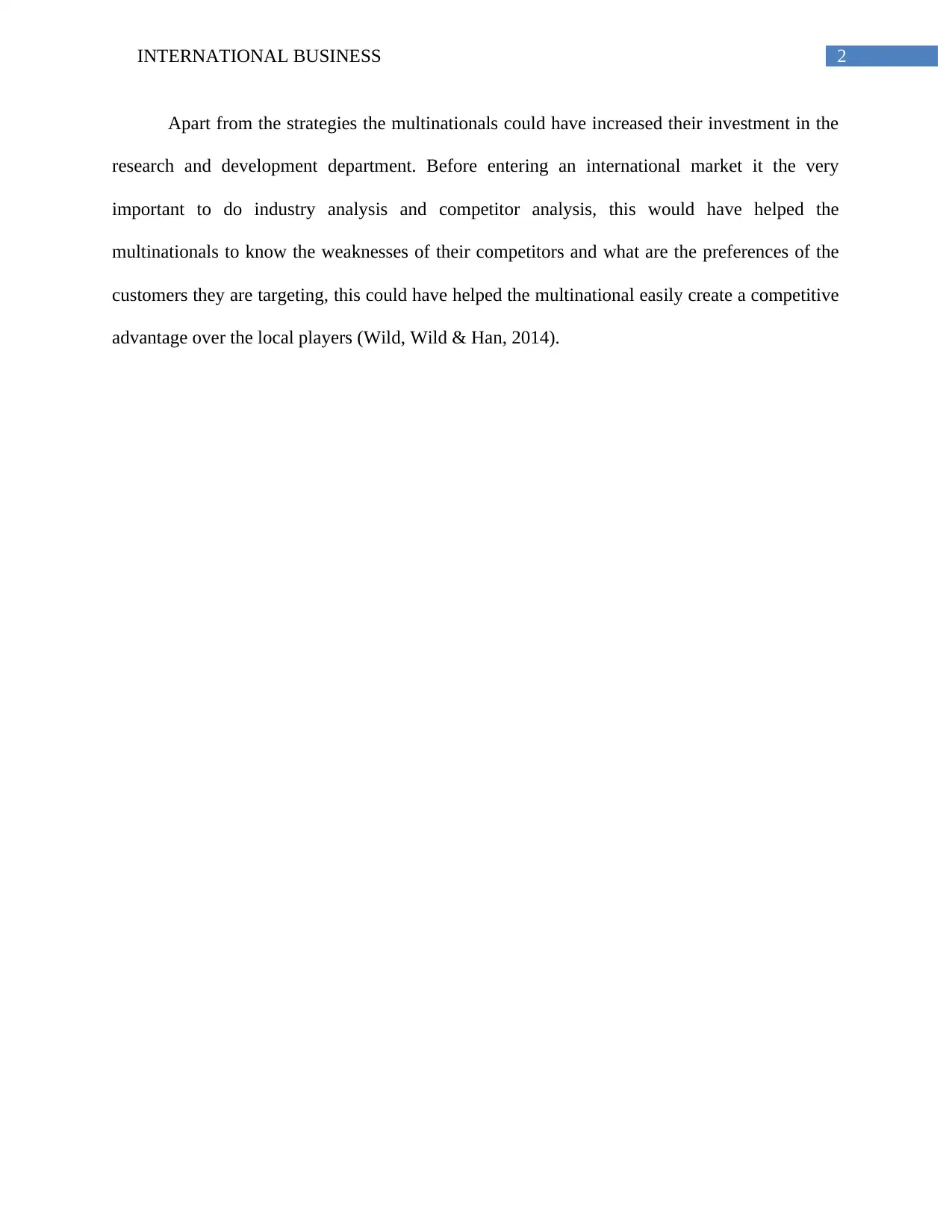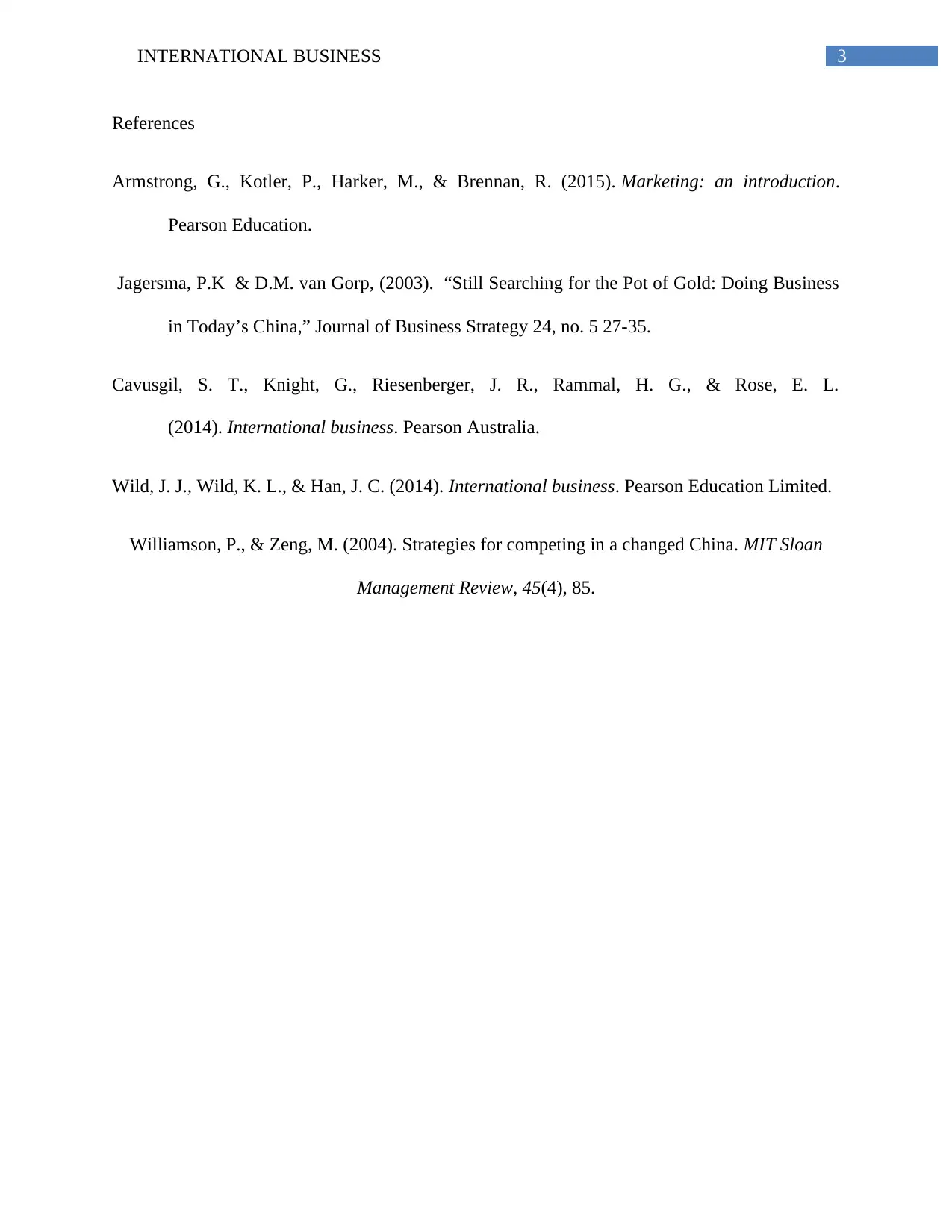International Business Case Study Analysis: Recommendations
VerifiedAdded on 2020/04/21
|4
|560
|638
Case Study
AI Summary
This case study analyzes the international business strategies employed in 2004, focusing on the challenges and opportunities in the Chinese market, particularly in the context of competition with companies like Motorola. The analysis highlights the initial strategies, such as entering the high-end market and cost reduction, while also providing recommendations for improvements. The study suggests that partnering with local players, acquiring Chinese companies, and increasing investment in research and development could have been more effective strategies. Furthermore, it emphasizes the importance of industry and competitor analysis to gain a competitive advantage. The document references several academic sources to support its analysis and recommendations, making it a valuable resource for students studying international business and strategic management.
1 out of 4








![[object Object]](/_next/static/media/star-bottom.7253800d.svg)